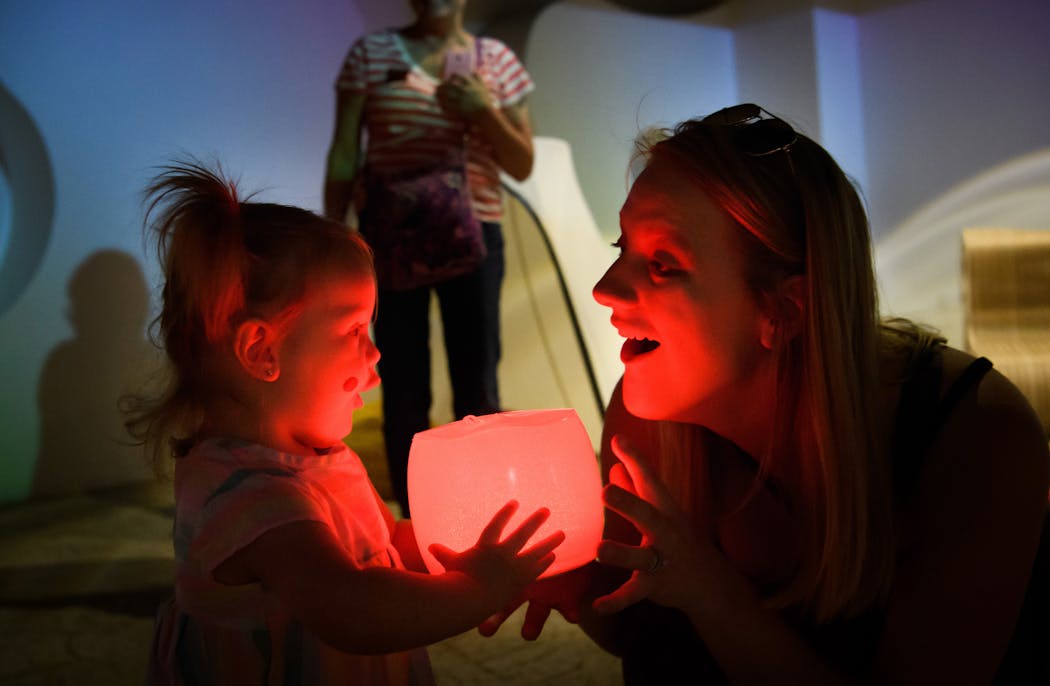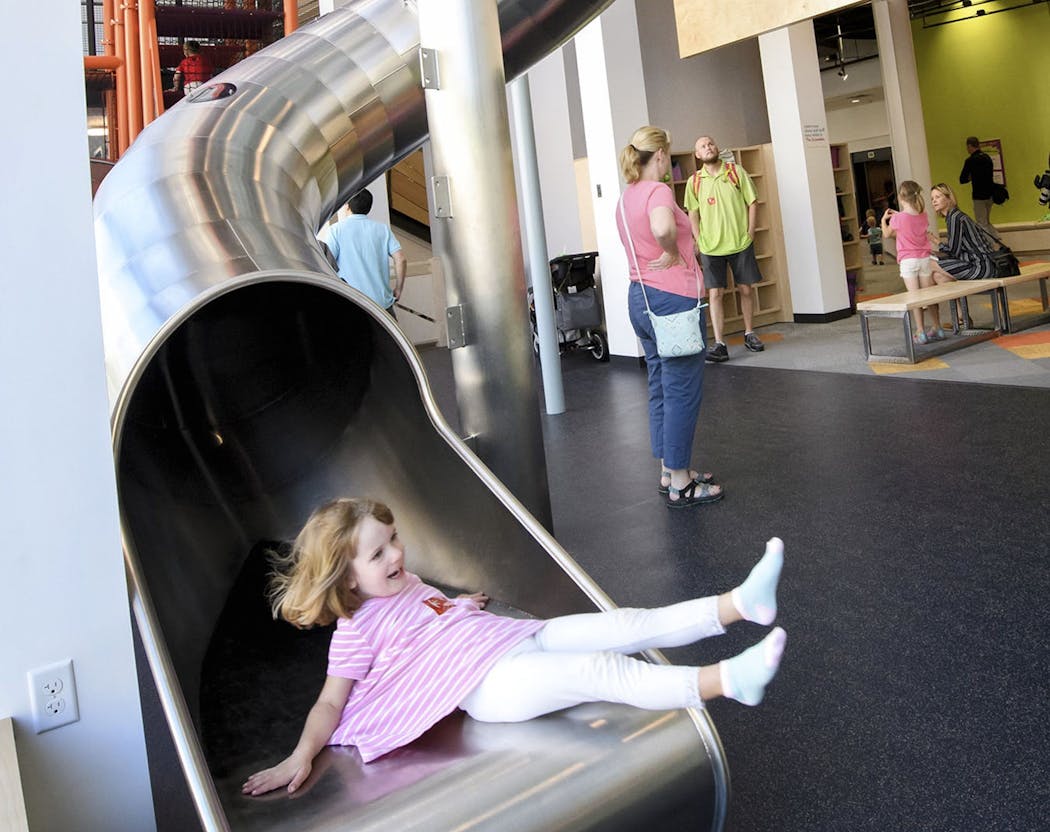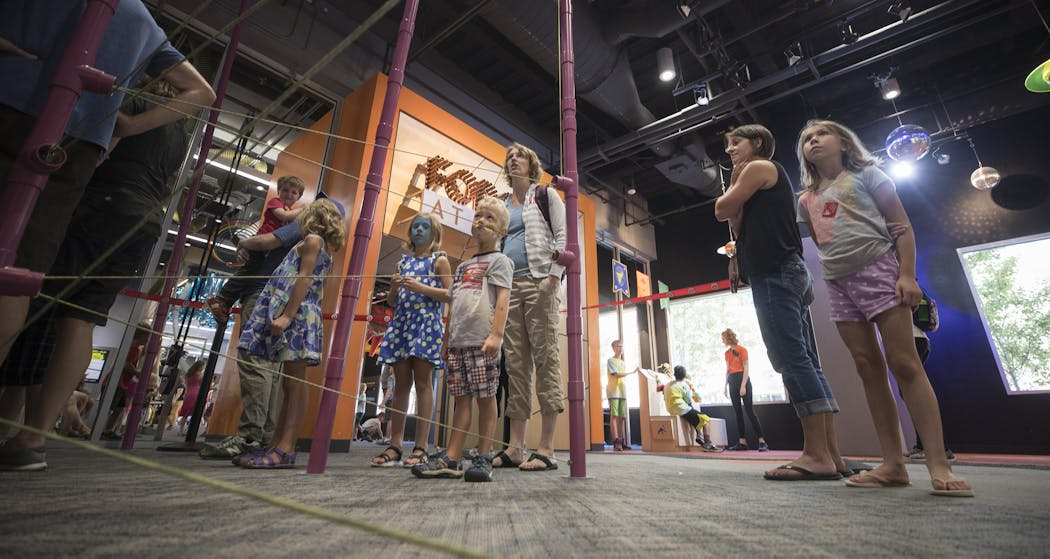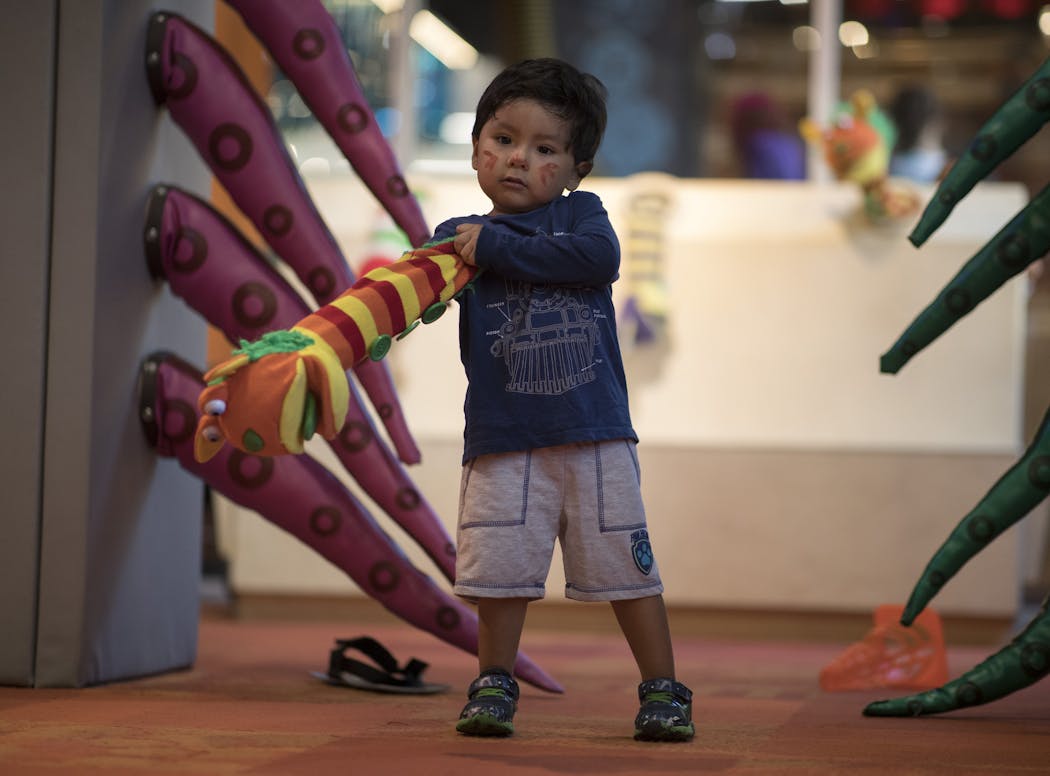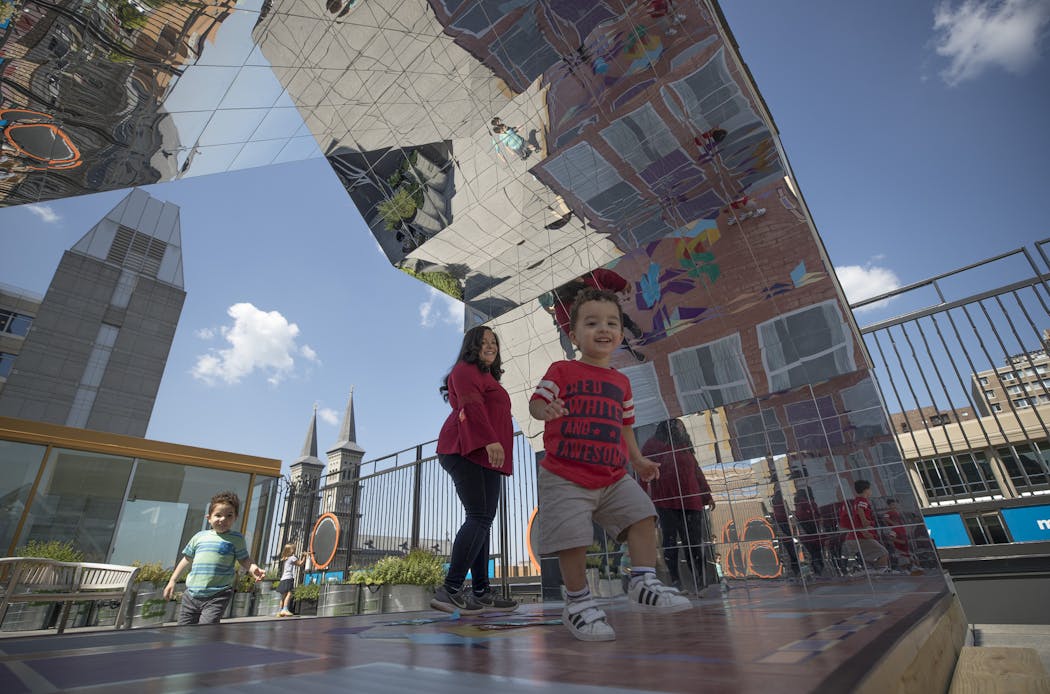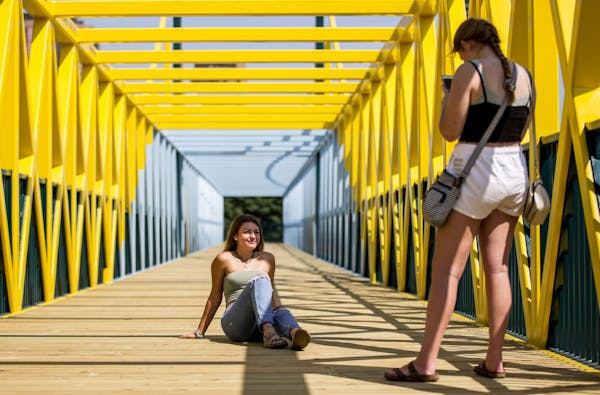A year after the Minnesota Children's Museum's $30 million upgrade, a lot of things are going right.
Kids scamper up the new four-story climbing tower and fly down its chute, they spray water and blow bubbles and launch pingpong balls into the air, they jump and laugh and learn.
But soon after the museum's 10 new exhibits debuted last June, a few things also started going awry.
Visitors swarmed some areas and avoided others; they couldn't figure out the Water Graffiti exhibit; they whacked one another with the Imaginopolis pool noodles. And there was also the matter of wear-and-tear created by the crowds of more than 2,000, which arrived on the museum's busiest days.
While a new tech gadget can be prototyped, tested and refined to work out the kinks before its release, that's not easily done with an entire museum.
"The kids will always do things we don't expect," noted Jess Turgeon, the museum's director of experiences.
For the first several months after the museum reopened, Turgeon and other members of the museum's First 100 Days team (which included representatives from exhibit development, floor staff, facilities and communications) met daily to talk about what they'd heard and observed. They also got feedback from surveys and focus groups, along with data from hourly head counts of each exhibit area and shadowing individual kids as they moved through the galleries.
When visitors trampled the courtyard's grass into a mud pit and kept yanking the cord out of the fire station's rotary phone, the First 100 Days team was ready to respond.
"You can build anything, and an 8-year-old girl can destroy it," Turgeon said.
While the museum's old design focused on concept-based pretend play — kids crawled through a giant anthill and presumably learned something about the lives of ants — the new exhibits encourage skill-building through more open-ended opportunities to create and explore.
The Imaginopolis exhibit, for example, is stocked with large foam pieces, tents, lights and fabric for kids to create their own worlds. There's no set goal to achieve or problem to solve. One kid might lay a giant foam horseshoe in front of a tent's door and call it a moat for his castle; another might prop the horseshoe around the tent's entrance to create a cave.
"New vision is all about the process, not the outcome," Turgeon said.
But it hasn't been easy to get visitors to make the conceptual leap to more abstract, instruction-free play. Many kids approached exhibits wanting to know what they're supposed to "do." One focus group participant summed up the sentiment: As a professional educator, she respected the new approach, but as a parent, she felt her kids floundered without suggestions on how to get started.
That was a problem at the Forces at Play exhibit, where a large black Water Graffiti board that resembles a Light Bright screen wasn't getting much attention. Kids would approach the board, touch it, and wait for something to happen. When nothing did, they'd move on.
Hoping to cultivate perseverance, museum staff wanted kids to have to work a bit to figure it out. So, instead of tacking up a list of instructions, they decided to add a hint: a photograph of a kid wearing a raincoat (from the adjacent play car wash) touching the board. They hoped it would help kids figure out that contacting the board with a wet finger completes a circuit and turns on a light, allowing them to create water graffiti.
Designed for change
The old museum wasn't designed to evolve. The massive, iconic anthill was so entrenched that it had to be ripped out with heavy machinery.
The museum's new design, by contrast, incorporates flexibility. In the Our World gallery, each storefront (restaurant, post office, hardware store) is simply a lightweight facade, making it easy to adjust the business' size or type.
The Creativity Jam exhibit has already swapped out a sticker room for musical instruments. In the Makers' Studio, the primary material used to create (paper, clay, fiber) changes every few months. (The face-painting station, though, won't be going anywhere. "We'd have riots if that happened," Turgeon said.)
The museum also uses its space as a testing ground for new exhibits.
In the Balance Zone, designers are currently trying out three styles of teetering structures for the upcoming exhibit based on the PBS Kids TV series "Wild Kratts."
Meanwhile, Turgeon and her colleagues are working on resolving one challenge that arose from the Our World fire station working a little too well: A few pint-size firefighters have gotten so absorbed in their play that they pulled the gallery's actual fire alarm, causing the entire building to be evacuated.
Undaunted, Turgeon said she and the rest of the staff are simply living the museum's new mission to see failures as growth opportunities.
"As we tell the kids," Turgeon said, "that's part of the process."
Examples of an evolving design
Imaginopolis
Issue: Designers intended the exhibit's supply of pool noodles to be used for connecting large foam blocks, akin to giant Tinker Toys. Unfortunately, the kids just whacked one another with them.
Solution: The staff tried cutting the noodles to make them shorter, but the fighting continued, so the noodles were removed.
The Scramble
Issue: A "socks only" policy was enacted to keep the four-story climbing structure clean and reduce wear. But many adults wanted to keep a close eye on younger kids without taking off their shoes.
Solution: The staff relaxed the rule to allow adults to wear shoes on exterior platforms and walkways.
Laser Maze
Issue: A practice area outside the Laser Maze represents the beams as cords. The idea was that kids would try to crawl through the maze, and if a cord was touched, a chime would ring. Instead, kids just yanked on the cords to ring the chimes.
Solution: The chimes were removed to make cord-yanking less appealing.
Space Race
Issue: Wall-mounted vinyl alien tentacles were supposed to be an obstacle for kids to brush past as they raced through a narrow opening. But the tentacles kept getting ripped when kids climbed on them or swung between them.
Solution: Exhibit fabricators continue to repair the tentacles as they consider other options.
Tip Top Terrace
Issue: This rooftop house structure contained a spinning disk hanging by a cable, for kids to use as a swing, but the cable snapped several times.
Solution: The disk was removed and replaced with a tire swing. When that broke, the exhibit developers tried a new concept entirely, lining the structure with mirrors so kids could dance around and see their reflection from different angles.
Our World
Issue: When the Our World gallery's solid external wall was replaced by glass to bring in natural light and allow visitors to see inside, people kept walking into it.
Solution: Decals were added to make the glass more visible.

